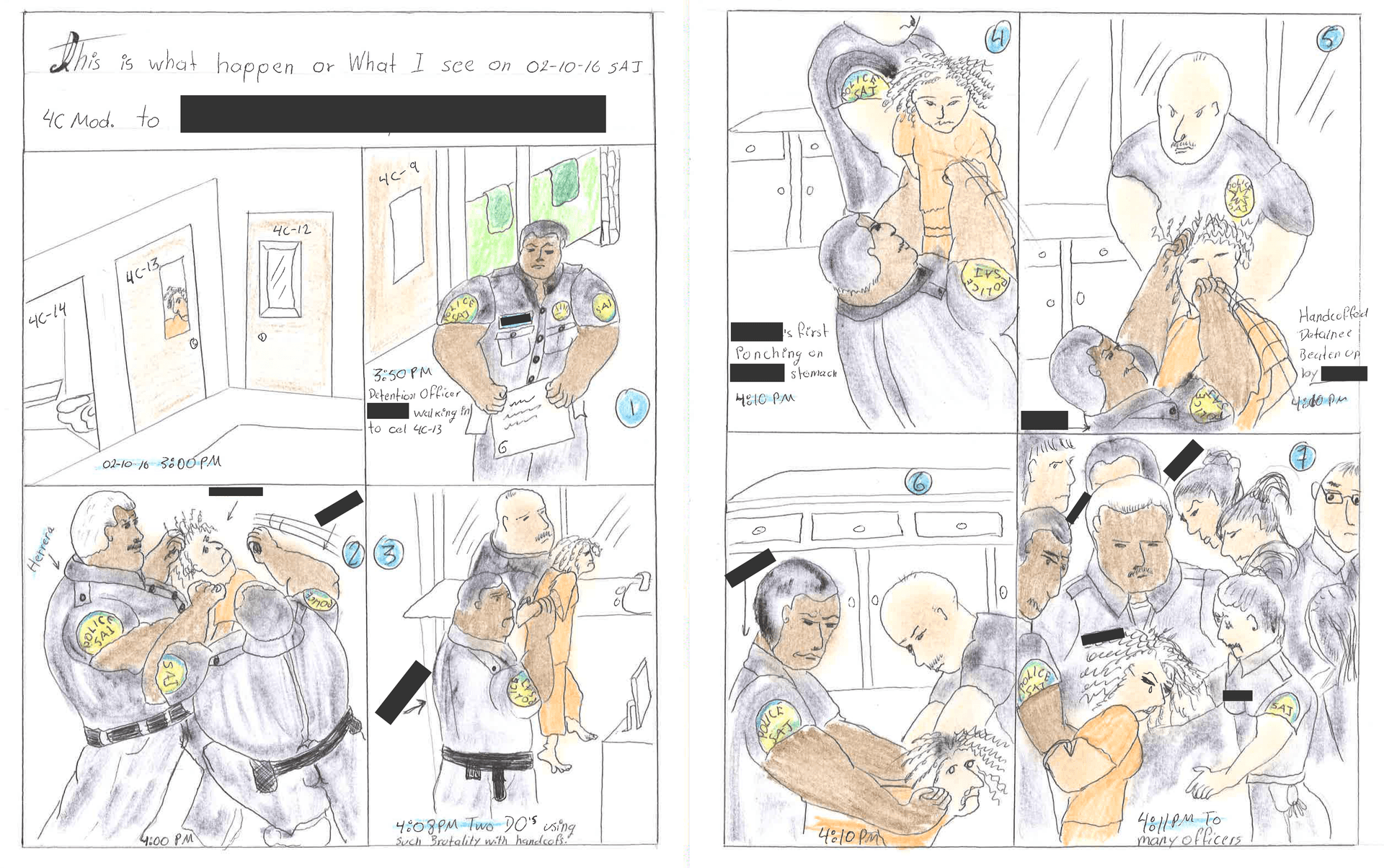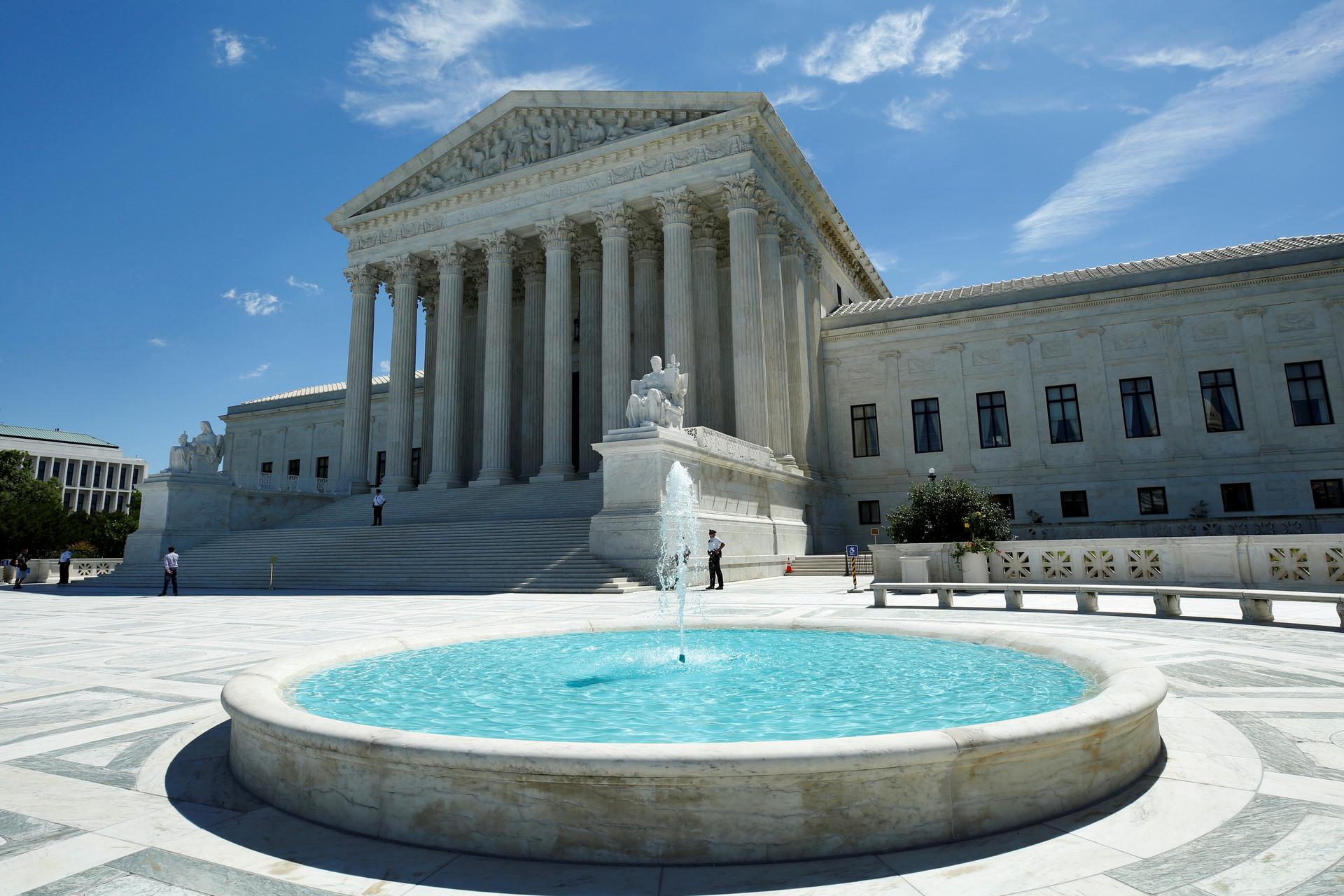The Supreme Court is considering whether immigrants detained for more than six months should have a chance at bail
Arguments before the US Supreme Court in Washington, DC, on Oct. 3, 2017 included cases about gerrymandering, drawing electoral districts to favor a particular party, and the rights of immigrants to not endure indefinite detention.
Gretta Soto Moreno, 44, a trans woman asylum-seeker from Mexico, spent nearly three years in immigration custody and endured constant abuse. But when she was released on bond on March 7, 2016, things started to improve.
Soto Moreno was released because a federal court ruled in Jennings v. Rodriguez that people in immigration detention deserve a chance at being released, just like other people awaiting criminal trials in this country.
On Tuesday, the Supreme Court heard arguments in a case about whether immigrant detainees who fight deportation while incarcerated for years should have a judge decide if they can be released on bail when their detention exceeds six months.
If the judges overturn the lower court ruling in Jennings, thousands of non-citizens like Soto Moreno would lose the right to have even a hearing that would give them a chance to be released. Among them are green card holders, torture survivors and asylum seekers. Some 34,000 to 45,000 people are kept in immigration detention on any given day.
If the Supreme Court sides with the federal government, it would also officially sanction a “two-tier system of justice”: One for criminal cases, where even those facing serious charges have the right to a bail hearing, and one for immigration cases, where the government decides that a person “can be detained for years without a bond hearing,” says Sarah Deri Oshiro, director of immigration practice at the Bronx Defenders in New York City.
The Bronx Defenders are a nonprofit contracted by the city government to provide legal representation to immigrants at risk of deportation and who cannot afford attorneys. Many of Oshiro’s immigrant clients are detained at the Hudson County Jail in New Jersey, which also incarcerates county residents charged with a crime. She witnesses the different treatment every day.
“In the next pod over, the county’s residents do have the right to a bail hearing,” she says. “That is a pretty obvious and blatant example of the problem.”
The right to a bail hearing, where a judge can set an amount of money incarcerated people can pay in exchange for freedom while awaiting trial, is undisputed in the US criminal justice system, says Oshiro. But it’s not required in the immigration system, where immigrants “are detained under a civil enforcement scheme.”
The US Court of Appeals for the Ninth Circuit bridged that gap in 2015 in Jennings. A similar ruling, Lora v. Shanahan, came the Second Circuit, but is less broad and it doesn’t extend to asylum seekers. If the Supreme Court overturns the Jennings decision, it would effectively reverse the Lora decision as well.
The number of detained immigrants in removal proceedings who have received a custody hearing over the last 20 years, has increased from one in five to nearly half, but that is mostly a function of soaring detention levels, according to government records obtained by the Transactional Records Access Clearinghouse (TRAC). About half of those given hearings are denied bail.
However, if the judges agree that non-citizens are entitled to such hearings, the guarantee would likely extend to every jurisdiction in the US. That’s the goal of the American Civil Liberty Union (ACLU), the legal rights organization that first challenged the government’s practice of indefinite detentions and won. Tuesday, its lawyers appeared before the Supreme Court.
“Forcing people to languish indefinitely in detention without a hearing as they make their case to remain in the US is cruel and unnecessary,” said Ahilan Arulanantham, the ACLU lawyer who argued the case, in a press release circulated by the organization after the hearing.
“We’re hopeful the Supreme Court, which has long held that the right to a hearing is a bedrock due process requirement, will agree.”
The outcome is relevant at a time of increased immigration arrests and an immigration courts backlog that prolongs wait time by two to four years, depending on location.
“The experience of living behind the bars, it’s horrible,” says Soto Moreno, who fled Mexico in the back of a pickup truck and crossed into Arizona in 2003. “We follow orders, we follow instructions. That’s horrible.”
Soto Moreno spent 20 days at Eloy Detention Center in Arizona in 2011 after being convicted for driving under the influence. After a second traffic stop in 2013, she was sent back to Eloy. By the time she walked out of the transgender pod of the Santa Ana City Jail in 2016, after advocates raised funds for her $7,500 bond, she had been repeatedly abused by guards with humiliating cavity searches, had witnessed beatings of other transgender women and had often been told to “act like a man.” After an outcry from advocates and neighbors, the transgender unit there is expected to close in 2020.

“When they give me a bond, I have not even family here to pay it all,” she says. “It was totally expensive for me.”
Her mental health deteriorated to the point that she thought about suicide. Because immigrants don’t have the right to an attorney like criminal defendants do, Soto Moreno herself initially argued her complex asylum case against trained government lawyers — all the while in detention and facing deportation.
Related: Private prisons aren’t the only companies making a fortune off immigration detention
Karen Zwick, managing attorney for the LGBT Immigrant Rights Initiative at the National Immigrant Justice Center in Chicago, took Soto Moreno’s case in 2014 and helped turn the tide.
“People routinely give up on their asylum claims because they cannot endure the torture that they’re facing from the US government by being in a detention center,” says Zwick.
It’s difficult to overstate the importance of access to freedom, she says. The ability to gather evidence is life changing.
The government argues that a rule that mandates bail hearings after six months of detention is either unwarranted or undesirable. Bail hearings, they say, should be granted on a case-by-case basis. They also worry that immigrants could go into hiding or pose a threat to their communities.
But according to Michael Kauffman, a lawyer with the ACLU of Southern California who worked on Jennings, many of the newcomers pose no threat at all. And some 60 percent of asylum seekers, based on data the ACLU collected to argue its case, are ultimately granted asylum.
“That puts them on a path to get a green card and ultimately citizenship,” he says. “There’s a real question here of why are we locking these people up for such long times, when some of them have very settled lives in the US.”
Findings by TRAC confirm that immigrants do show up for their court hearings after they’re freed on bond. Only 14 percent did not during the 2015 fiscal year, and that number appears to be on the decline.
Data also show that being released on bond made it possible for the majority of people to successfully argue their cases against deportation. In the 2015 fiscal year, two out of three people released on bond were found non-deportable.
Detaining large numbers of non-citizens is also costly. In May 2017, John Kelly, then secretary of homeland security, requested an appropriation of $7.5 billion for FY 2018, to increase detention beds to 51,000.

“It’s resource intensive,” she says, because every single detainee seeking a bond hearing would have to file a lawsuit in federal court. “You might have a good judge one day, a bad judge another day, for two people identically situated even in the same city. It’s really problematic.”
For Soto Moreno, who has been living in Los Angeles since last year and works as a handy person, the ordeal is not over. While her asylum is moving forward, she’s still under ICE supervision with both phone calls and house visits. The trauma of detention is still a reality.
“It’s still difficult for me to hang out with people,” she says. “My particular case is kind of a psychosis. I don’t want to do anything wrong just to go back to jail. I’m definitely not healed from that particular situation.”
